Jinshanling Great Wall: The Hidden Gem of China’s Ancient Marvels
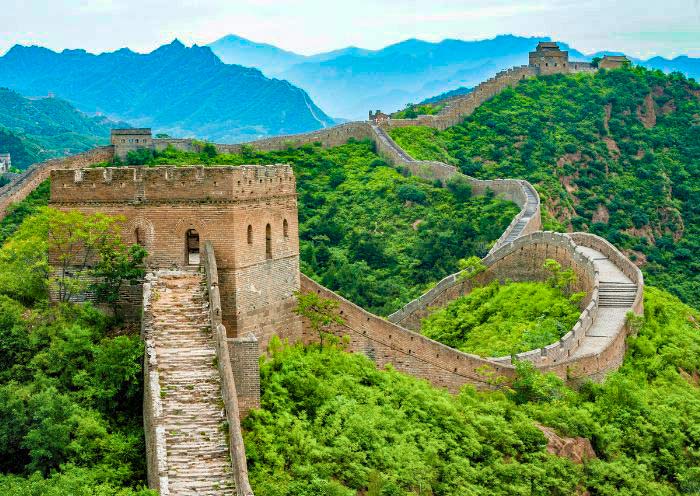
An Essential Guide to Visiting Jinshanling Great Wall
In This Guide
- An Essential Guide to Visiting Jinshanling Great Wall
- The Rich History and Legends of Jinshanling Great Wall
- Main Highlights: What You Absolutely Can’t Miss
- Planning Your Visit: A Practical Guide
- Tickets: Prices, Booking, and Tips
- How to Get There: A Complete Transportation Guide
- Local Cuisine and Accommodation Nearby
- Frequently Asked Questions
- Final Thoughts on Your Trip
Visiting the Jinshanling Great Wall is akin to stepping into a living tapestry of Chinese history, where ancient stones whisper tales of resilience and adventure. Nestled amidst the verdant hills northeast of Beijing, this remarkable section of the Great Wall spans 6.5 kilometers and offers a perfect blend of breathtaking scenery and rich cultural heritage.
Unlike the more commercialized segments, Jinshanling remains a serene escape, adorned with 67 watchtowers and surrounded by lush trees. The undulating terrain presents a unique hiking experience, catering to both casual walkers and seasoned trekkers, all while providing stunning views of the wall snaking its way through the landscape. Here, the air is filled with the scent of wildflowers, and the sight of apricot blossoms in spring adds a touch of magic to the already enchanting scenery.
With its well-preserved structure dating back to the Ming Dynasty, Jinshanling not only invites exploration but also encourages travelers to reflect on the ingenuity and tenacity of those who built it. Whether you are drawn by the allure of hiking, the tranquility of fewer crowds, or the chance to immerse yourself in a historical marvel, Jinshanling offers an unforgettable journey into the heart of China’s past.

Jinshanling Great Wall.
Get ready to lace up your hiking boots and discover why this ancient fortress, with its array of unique watchtowers and picturesque views, is an essential stop for anyone passionate about Chinese history and culture.
The Rich History and Legends of Jinshanling Great Wall
Nestled in the serene landscapes of Hebei Province, the Jinshanling Great Wall is not just a remarkable feat of military engineering but also a canvas painted with rich history and captivating legends. As you stroll along its ancient stones, you are walking through centuries of Chinese history and folklore, each step echoing tales of bravery, sacrifice, and the indomitable spirit of the Chinese people.
A Brief Historical Overview
Constructed during the Ming Dynasty (1368–1644), the Jinshanling Great Wall stretches approximately 6.5 kilometers and serves as a vital link between the Simatai Great Wall to the east and the Gubeikou Great Wall to the west. This section was built due to the increasing threats from northern tribes, and its strategic design reflects the military ingenuity of the era.

Jinshanling Great Wall.
The wall is adorned with 67 watchtowers and 3 beacon towers, each serving a crucial role in communication and defense. These structures, made from rammed earth and stones, stand tall at about 23 feet high and 6.5 feet wide, designed to withstand the test of time and nature. The recent restoration efforts have ensured that Jinshanling retains its historical integrity, while also providing visitors with an intimate glimpse into its storied past.
Legends Intertwined with History
The Tale of Heigu Tower
One of the most poignant legends associated with Jinshanling is that of Heigu Tower. According to local folklore, a young woman named Heigu was building the Great Wall alongside her father and other soldiers when a sudden lightning strike ignited a fire at the tower. In a heroic act of bravery, Heigu attempted to extinguish the flames but tragically lost her life in the process. To honor her sacrifice, this watchtower was named after her, symbolizing the countless lives dedicated to the protection of their homeland.
The Story of the Flower Tower
Another enchanting tale can be found at the Flower Tower, renowned for its beautifully carved jade doors and windows adorned with floral and animal motifs. It is said that the tower was not just a military structure but also a lookout point for lovers who would meet under the cover of its intricate designs. The floral carvings symbolize the beauty of love that flourishes even amidst the harsh realities of war.
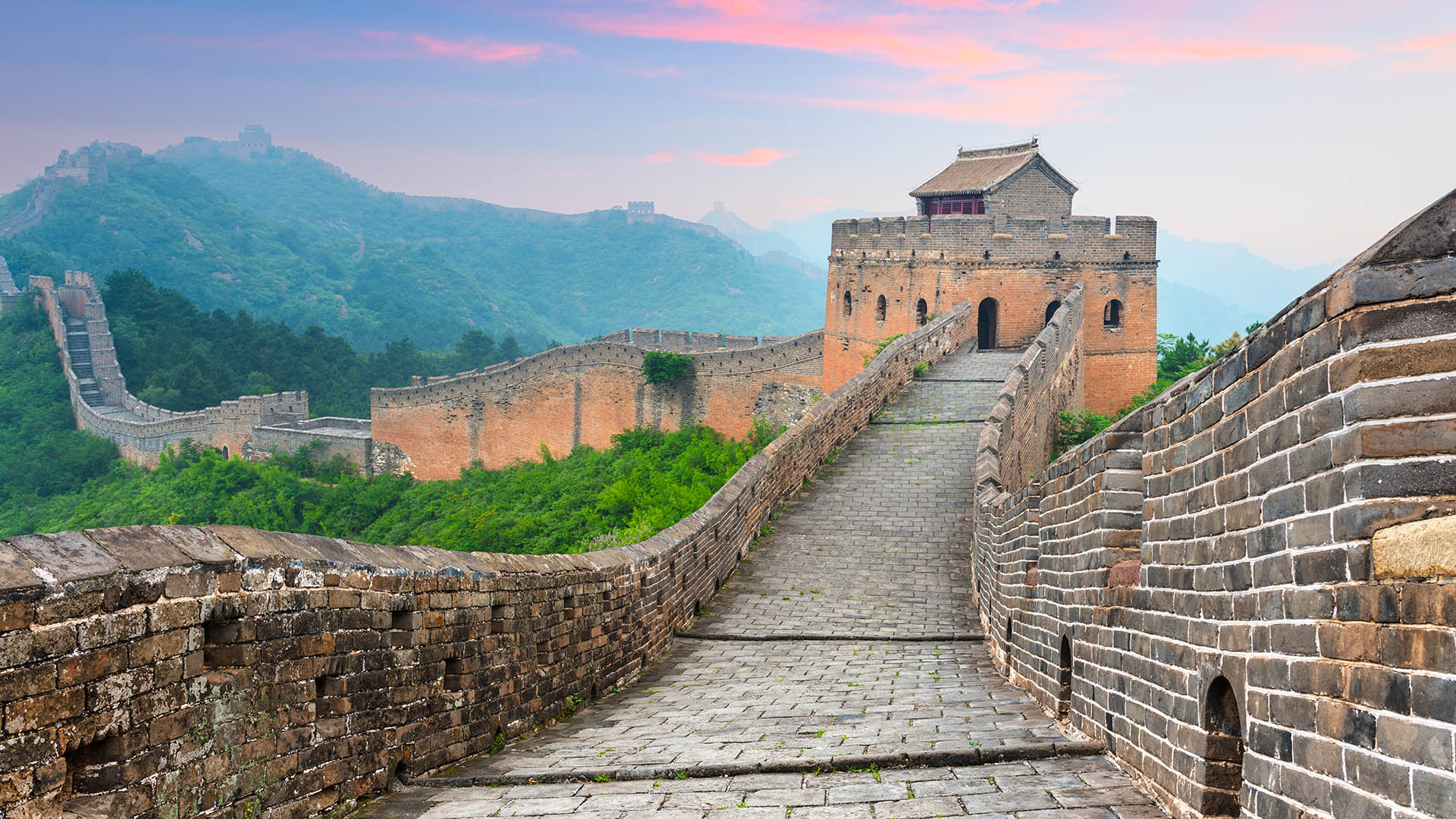
Jinshanling Great Wall.
The East and West Five-Window Towers
The East Five-Window Tower and West Five-Window Tower are named for their unique architectural feature—five embrasures on both the north and south sides. These towers were designed for both defense and habitation, allowing soldiers to protect the Wall while also resting comfortably. As you stand in these towers, you can almost hear the whispers of soldiers discussing strategies and sharing tales of heroism.
Cultural Significance
The Jinshanling Great Wall is a testament to the determination and resilience of the Chinese people. It reflects the historical context in which it was built—a time of constant vigilance against external threats. As you traverse its rugged paths and gaze upon the breathtaking landscapes, you will appreciate not only the physical structure but also the cultural legacy it represents.
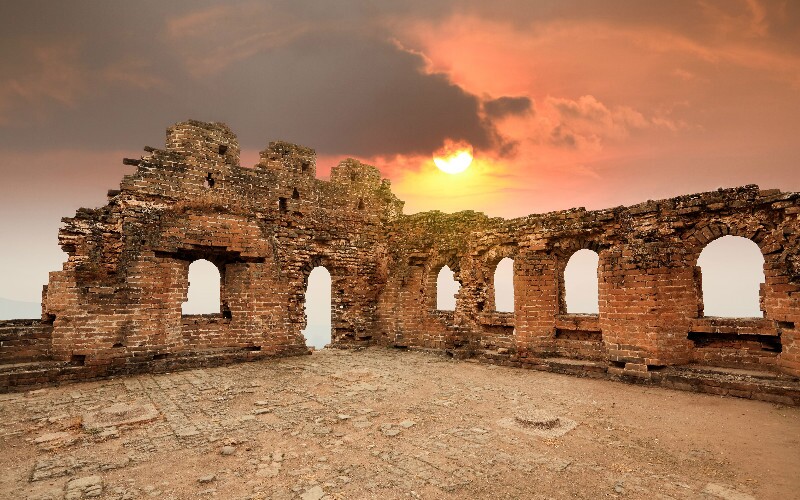
Jinshanling Great Wall.
Why Jinshanling Matters Today
Visiting the Jinshanling Great Wall is more than just a hike; it is a journey through time where history and legends intertwine. The tranquility of this section, coupled with its fewer crowds compared to other more commercialized areas like Badaling, offers a unique opportunity for reflection and immersion in the rich tapestry of Chinese culture. As you walk along the ancient stones, consider the stories of those who came before you—soldiers, builders, and lovers—who all contributed to the legacy of this magnificent Great Wall.
Whether it’s the breathtaking views, the stories etched into the stones, or the legends that linger in the air, the Jinshanling Great Wall remains a captivating destination for those eager to explore China’s history and heritage.
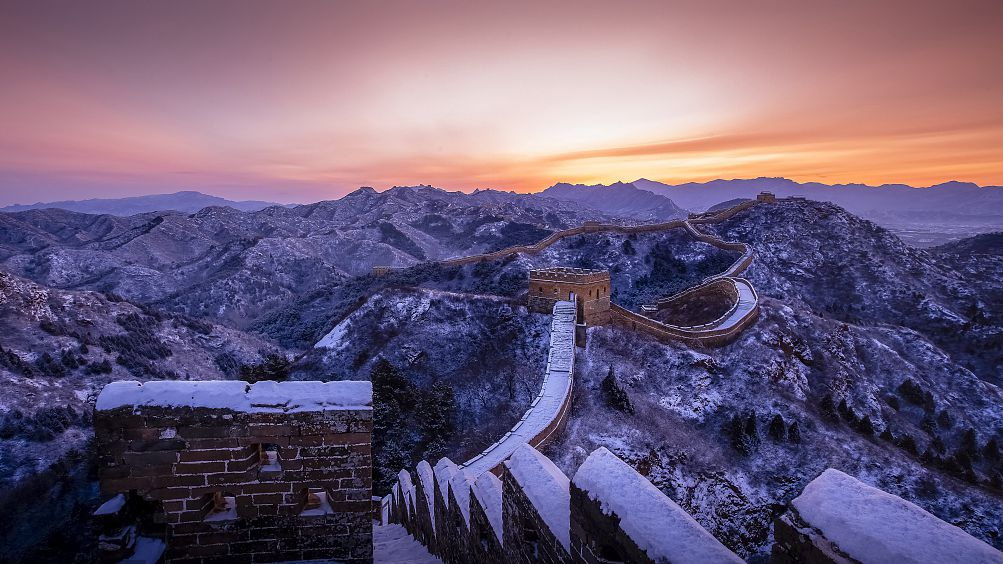
Jinshanling Great Wall.
Main Highlights: What You Absolutely Can’t Miss
Unveiling the Wonders of Jinshanling Great Wall
Located just 140 kilometers northeast of Beijing, the Jinshanling Great Wall is a breathtaking blend of history and natural beauty. Renowned for its well-preserved structure and stunning vistas, this section of the Great Wall invites you to step back in time while enjoying the great outdoors. Here are the main highlights you absolutely can’t miss during your visit.
1. Historical Watchtowers
One of the defining features of Jinshanling is its 67 watchtowers and 3 beacon towers. Each watchtower has a unique story, with informative plaques in both Chinese and English to enrich your understanding. Don’t miss the following:
- East and West Five-Window Towers: These strategic towers feature multiple embrasures for defense and offer impressive views.
- Small and Big Jinshan Towers: With their distinct architectural style reminiscent of southern Chinese homes, these towers serve as both defensive structures and scenic viewpoints.
- Heigu Tower: Rich in legend, this tower commemorates a courageous woman who died trying to extinguish a fire during its construction.
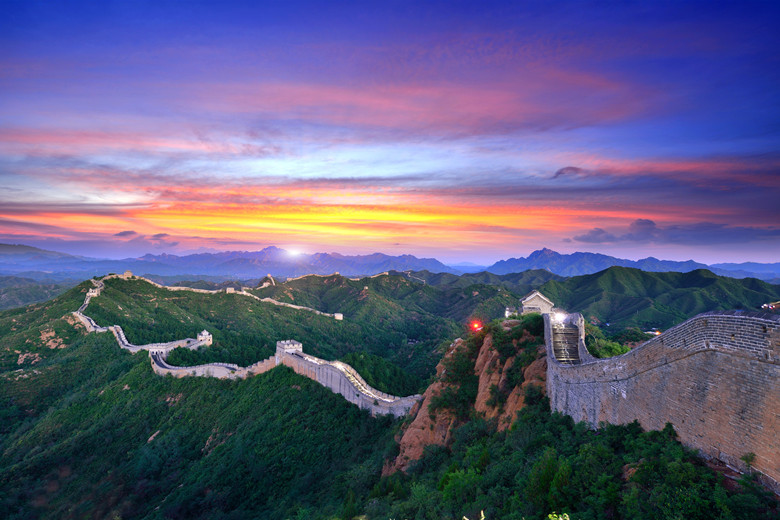
Jinshanling Great Wall.
2. Stunning Scenery
Jinshanling’s landscape transforms spectacularly with the seasons.
- Spring: Witness the vibrant apricot flowers blooming along the wall, adding a burst of color to the rugged stone.
- Summer: The lush greenery envelops the area, creating a stunning backdrop against the sea of clouds that often graces the early mornings.
- Autumn: Experience the serene beauty of golden leaves, as the wind whispers through the trees, making this a peaceful escape.
- Winter: The snow-covered wall resembles a traditional Chinese ink painting, offering a magical and tranquil atmosphere.
3. Adventure Hiking Routes
For the hiking enthusiasts, Jinshanling is a paradise with multiple trails suited for various skill levels. Notable routes include:

Jinshanling Great Wall.
- Route 1: A leisurely 2 to 2.5-hour hike through the mideastern part, featuring key watchtowers like Heigu and Big Jinshan.
- Route 3: A more challenging 3 to 4-hour trek that takes you to the summit, letting you gaze over the endless expanse of the Great Wall.
- Route 4: For the seasoned adventurers, this demanding 5 to 6-hour journey encompasses the entire Jinshanling stretch, rewarding you with panoramic views and a sense of accomplishment.
4. Photographic Opportunities
Jinshanling is a photographer’s dream. The watchtowers against the backdrop of the rugged terrain, especially at dusk or dawn, create stunning images that capture the essence of ancient China. Be sure to bring your camera along to snap pictures of the enchanting landscapes and historical structures.
5. Tranquility Away from the Crowds
Unlike the more popular sections of the Great Wall, Jinshanling offers a serene experience with fewer tourists. The combination of its challenging terrain and slightly remote location means you can explore this historical marvel at your own pace, allowing for a more intimate connection with the site.
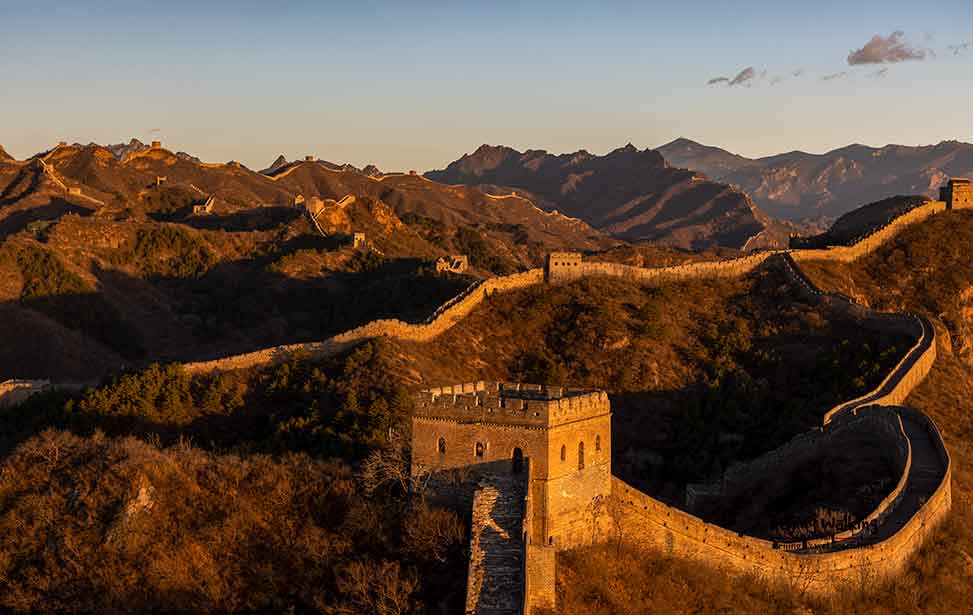
Jinshanling Great Wall.
6. Unique Cultural Experience
Immerse yourself in the rich history of the Ming Dynasty as you walk along the wall. Jinshanling is not just a physical structure; it embodies the stories of those who defended against invaders. The insights gained from this exploration are invaluable for understanding China’s past.
Conclusion
Whether you’re a history buff, an avid hiker, or simply in search of breathtaking views, Jinshanling Great Wall promises an unforgettable experience. With its captivating watchtowers, stunning seasonal scenery, and the tranquility that comes with fewer crowds, this section of the Great Wall is a must-visit destination for any traveler interested in Chinese history and culture. Prepare for an adventure that blends the past with the present in one of China’s most scenic locales!
Planning Your Visit: A Practical Guide
Discovering the Jinshanling Great Wall: A Comprehensive Visitor’s Guide
Embarking on a journey to the Jinshanling Great Wall is like stepping back in time, where history meets breathtaking natural beauty. This less-crowded section of the Great Wall is perfect for international travelers seeking adventure, culture, and tranquility. Below is your practical guide to planning a memorable visit to this magnificent site.
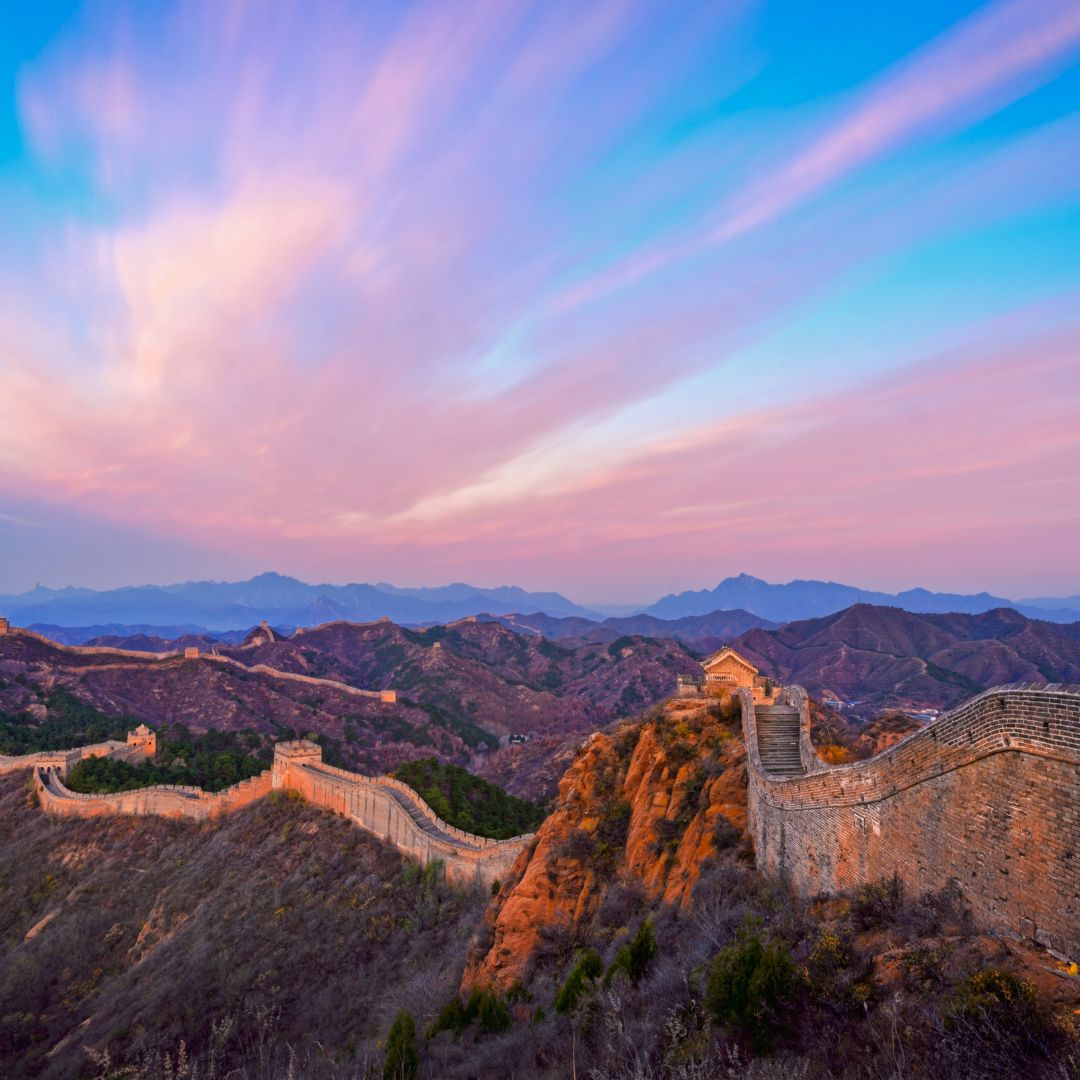
Jinshanling Great Wall.
Basic Information
- Location: Approximately 140 kilometers northeast of Beijing, in Chengde, Hebei Province.
- Length: 6.5 kilometers of well-preserved wall, featuring 67 watchtowers and 3 beacon towers.
- Height: Walls stand about 23 feet high and 6.5 feet wide, constructed from rammed earth and stone.
Opening Hours & Admission
- Main Entrance: Open daily from 4:00 AM to 6:30 PM.
- East Gate: 8:30 AM to 5:00 PM.
- West Gate: 9:00 AM to 5:00 PM.
- Entrance Fee:
- Peak Season (April 1 – October 31): 65 yuan
- Off-Season (November 1 – March 31): 55 yuan
- Cable Car: Round trip to Small Jinshan Tower costs 60 yuan.
Best Time to Visit
Jinshanling is beautiful year-round, but certain seasons offer unique experiences:
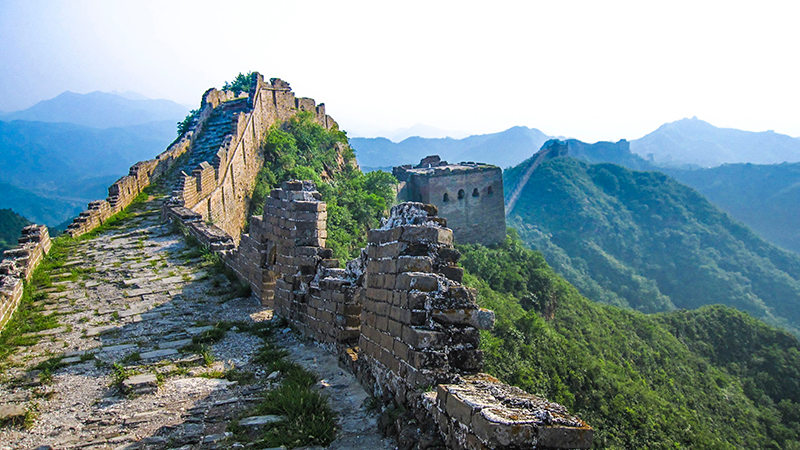
Jinshanling Great Wall.
- Spring (March – April): Witness blooming apricot flowers that add a vibrant touch to the landscape.
- Summer (May – August): Enjoy lush greenery and the chance to see the “sea of clouds” in the mornings.
- Autumn (September – October): The leaves transform into warm hues, creating a picturesque scene.
- Winter (November – February): The wall is often blanketed in snow, resembling a traditional Chinese ink painting.
How to Get There
From Beijing
- By Train & Taxi:
- Take trains S501 or S503 from Beijing North Station to Gubeikou Station.
- A taxi from there to Jinshanling’s entrance costs about 20 yuan.
-
Total travel time: Approximately 3 hours.
-
By Express Bus:
- Buses leave from Dongzhimen bus station on weekends and public holidays.
-
The fare is 50 yuan and it takes around 3 hours to reach Jinshanling.
-
By Private Car:
- For a personalized experience, book a private car service.
- This option includes English-speaking guides to enrich your visit.

Jinshanling Great Wall.
Recommended Hiking Routes
Jinshanling offers various routes catering to different skill levels:
- Mideastern Part:
- Level: Easy
- Duration: 2 – 2.5 hours
-
Highlights: General Tower, Heigu Tower, Small Jinshan Tower.
-
Western Part:
- Level: Moderate
- Duration: 2 – 2.5 hours
-
Highlights: West Five-Window Tower, East Taochun Tower.
-
Whole Eastern Part:
- Level: Moderate
- Duration: 3 – 4 hours
-
Highlights: East Five-Window Tower, Flower Tower.
-
Challenge the Whole Jinshanling:
- Level: Challenging
- Duration: 5 – 6 hours
- Overview: A complete trek covering 13 kilometers, ideal for experienced hikers.
Things to Do
- Hiking: Explore various trails that cater to all levels, from leisurely walks to challenging treks.
- Photography: Capture the stunning views and unique watchtowers, especially during sunrise.
- Cultural Exploration: Visit the historic watchtowers, each with its own story and significance.
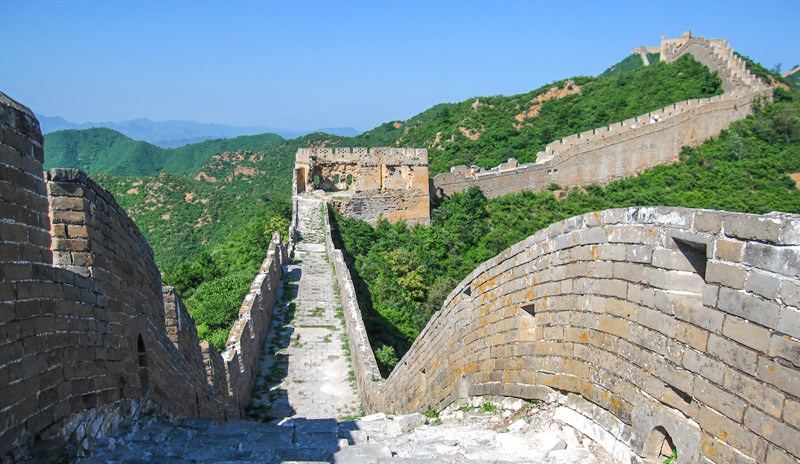
Jinshanling Great Wall.
Travel Tips
- Stay Hydrated: Bring enough water, especially if hiking during warmer months.
- Dress Appropriately: Wear comfortable footwear and dress in layers to adapt to changing weather.
- Cash: Some small vendors may not accept cards, so carrying cash is advisable.
- Avoid Peak Times: Visit on weekdays or during off-peak hours to enjoy a more tranquil experience.
With its rich history and stunning landscapes, Jinshanling Great Wall is a must-visit destination for those wanting to delve deep into China’s cultural heritage. Whether you seek adventure, photography, or simply a peaceful escape into nature, this section of the Great Wall promises an unforgettable experience.
Tickets: Prices, Booking, and Tips
When planning your visit to the Jinshanling Great Wall, understanding the ticketing process and associated costs can greatly enhance your experience. Here’s everything you need to know about tickets, booking, and some helpful tips for your journey.
Ticket Information
General Admission Prices
- Peak Season (April 1st – October 31st): 65 yuan
- Off Season (November 1st – March 31st): 55 yuan
Tickets can be purchased at the entrance, and it’s advisable to have cash on hand, as some vendors may not accept credit cards.
Cable Car Access
For those who prefer a more leisurely ascent or descent, the Jinshanling Great Wall offers a cable car service. The cost for a round trip is 60 yuan, and the cable car station is conveniently located near the main entrance’s ticket check. This is an excellent option for families and those who may find the steep climbs challenging.
Opening Hours
- Main Entrance: 4:00 am – 6:30 pm
- East Gate: 8:30 am – 5:00 pm
- West Gate: 9:00 am – 5:00 pm
Booking Tips
-
Advance Purchase: While tickets can be bought on-site, consider purchasing in advance during peak seasons to avoid long lines. Some travel agencies also offer packages that include transportation and guided tours.
-
Timing Your Visit: Arriving early can help you avoid crowds and allow you to enjoy the serene beauty of the Wall, especially if you’re eager to catch the morning sea of clouds.
-
Special Events: If you’re an avid hiker, check for annual hiking events at Jinshanling. These may require pre-registration, providing a unique opportunity to explore the Wall with fellow enthusiasts.
Additional Tips
-
Stay Hydrated: Bring plenty of water, especially if you plan to hike. The terrain can be challenging, and staying hydrated is essential.
-
Dress Appropriately: Wear comfortable shoes suitable for hiking, and consider the weather when choosing your clothing. Layers are recommended, as temperatures can vary throughout the day.
-
Plan Your Route: With multiple hiking routes of varying difficulty, it’s wise to decide in advance which path suits your skill level. If you’re unsure, consult a local guide or the information center upon arrival.
-
Explore Beyond the Wall: While Jinshanling is the main attraction, take time to appreciate the surrounding nature and the historical significance of the landscape. The watchtowers each have unique stories worth exploring.
By keeping this ticket and booking information in mind, you’ll be well-prepared for a memorable visit to the Jinshanling Great Wall, where history and nature converge in breathtaking harmony.
How to Get There: A Complete Transportation Guide
Getting to Jinshanling Great Wall: Your Complete Transportation Guide
Embarking on a journey to the Jinshanling Great Wall promises breathtaking views and a rich dive into China’s storied past. Nestled approximately 140 kilometers northeast of Beijing, Jinshanling is less frequented than other sections of the Great Wall, offering a tranquil experience amidst lush surroundings. Here’s a detailed guide on how to reach this captivating destination.
1. By Train and Taxi
Traveling by train is a scenic and cost-effective option for reaching Jinshanling from Beijing. Follow these steps:
- Departure Point: Start at Beijing North Station.
- Train Options: Board either the S501 or S503 train.
- Ticket Price: Each ticket costs 12 yuan.
- Duration: The train ride takes approximately 1.5 hours.
- Final Leg: Upon arrival at Gubeikou Station, take a taxi to the main entrance of Jinshanling.
- Taxi Fare: The taxi ride will cost around 20 yuan and takes about 30-40 minutes.
In total, expect a travel time of around 3 hours.
2. By Express Bus
For those preferring a direct bus route, the express bus is a convenient choice:
- Departure Point: Catch the bus from Dongzhimen Bus Station in Beijing.
- Schedule: This service operates only on weekends and Chinese public holidays.
- Departure Time: Buses leave at 9 AM.
- Travel Duration: You will arrive at the Jinshanling tourist center around 12 PM.
- Ticket Price: The bus ticket costs 50 yuan.
3. By Private Car
For a more personalized experience, consider hiring a private car:
- Booking: You can book a private car service that fits your schedule, providing flexibility and comfort.
- Guided Tours: Many services offer English-speaking guides who can enrich your journey with insights into the wall’s history and architecture.
- Access Points: Private cars can drop you off at either the east or west gate, allowing you to choose your entry point.
4. Additional Transportation Options
- Shuttle Buses: If you arrive at the Jinshanling tourist center, you can take a shuttle bus to the main entrance for 10 yuan per person.
- Cable Car: For a more leisurely ascent, consider utilizing the cable car service available at the main entrance, costing 60 yuan for a round trip.
Tips for Your Journey
- Timing: To ensure you have ample time to explore, plan to leave Beijing early in the morning, especially if traveling by bus or train.
- Pack Essentials: Bring water, snacks, and appropriate hiking gear if you plan to explore the wall on foot.
- Weather Check: Always check the weather forecast before your visit, as conditions can vary significantly, especially in winter.
- Cultural Etiquette: Familiarize yourself with local customs and etiquette to enhance your travel experience.
Conclusion
Whether you opt for the train, bus, or a private vehicle, reaching the Jinshanling Great Wall is an adventure in itself. The journey, combined with the stunning views and historical significance of this lesser-known section of the Great Wall, will undoubtedly leave you with unforgettable memories. Prepare for a day filled with exploration, history, and awe-inspiring landscapes.
Local Cuisine and Accommodation Nearby
When planning your visit to the Jinshanling Great Wall, it’s essential to immerse yourself in the local culture, which includes savoring the regional cuisine and finding the perfect place to rest after a day of exploration. Here’s a delightful guide to the gastronomic and accommodation options nearby.
Local Delicacies to Savor
Exploring Jinshanling isn’t complete without indulging in the local flavors. The adjacent villages and towns offer a variety of traditional dishes that reflect the rich culinary heritage of Hebei Province.
Must-Try Dishes
-
Jinshanling Roast Duck: A local take on the famous Peking Duck, this dish features crispy skin and tender meat, usually served with pancakes and a selection of sauces.
-
Pork with Garlic Sauce: A staple in northern Chinese cuisine, this dish combines tender pork with a fragrant garlic sauce, often paired with steamed rice.
-
Stir-Fried Seasonal Vegetables: Featuring fresh produce from local farms, this dish showcases the region’s vegetables, stir-fried to perfection with soy sauce and garlic.
-
Noodle Dishes: Handmade noodles served with various toppings such as beef, chicken, or vegetables are a local favorite. Be sure to try “Zha Jiang Mian,” which is tossed with a savory bean paste.
-
Steamed Buns (Baozi): These fluffy buns, filled with savory meat or vegetables, make for a perfect snack before or after your hiking adventure.
Local Eateries
-
Jinshanling Restaurant: Located just a short distance from the main entrance, this establishment offers a range of local dishes in a cozy setting. The roast duck is a crowd favorite here.
-
Huabei Xiaochu: Known for its homemade noodles and traditional dishes, this restaurant emphasizes local flavors and fresh ingredients. The ambiance is warm and welcoming, making it a great spot for families.
-
Village Street Vendors: As you explore the area, keep an eye out for street vendors selling snacks like grilled skewers and fried dough sticks. These quick bites are not only delicious but also give you a taste of authentic local life.
Comfortable Stays Nearby
After a day spent hiking the Jinshanling Great Wall, you’ll want a comfortable place to rest your weary feet. Fortunately, there are several accommodation options that cater to various preferences and budgets.
Recommended Accommodations
-
Jinshanling Great Wall Hotel: Located conveniently near the entrance, this hotel offers comfortable rooms with stunning views of the Great Wall. It’s an excellent choice for those looking to enjoy both luxury and history.
-
Beijing Huayi Hotel: Situated a bit further away but worth the drive, this hotel provides modern amenities and a peaceful atmosphere. There’s a restaurant on-site that serves a mix of local and international cuisine.
-
Homestays in Local Villages: For a more authentic experience, consider staying in a local homestay. These accommodations often offer meals prepared with homegrown ingredients and provide insights into the local culture.
-
Camping Options: For the adventurous spirit, camping at designated sites near the Great Wall can be an unforgettable experience. Imagine waking up to the serene views of the mountains and the Great Wall bathed in morning light.
Conclusion
A visit to Jinshanling is not just about hiking on one of the most beautiful sections of the Great Wall; it’s also an opportunity to explore the rich culinary offerings and find a cozy place to recharge. Whether you choose to indulge in local delicacies or opt for a homestay, the flavors and comforts of Jinshanling will enhance your journey through this historical treasure.
Frequently Asked Questions
Frequently Asked Questions about Jinshanling Great Wall
1. Where is the Jinshanling Great Wall located?
Jinshanling Great Wall is situated in Chengde, Hebei Province, approximately 140 kilometers northeast of Beijing. It connects to the Simatai Great Wall to the east and the Gubeikou Great Wall to the west.
2. How long is the hiking trail at Jinshanling?
The hiking trail at Jinshanling stretches about 6.5 kilometers. While it is flatter than some other sections like Simatai, it does feature steeper climbs compared to Mutianyu, making it a great option for hikers of varying skill levels.
3. What are the best times of year to visit Jinshanling?
The ideal time to visit Jinshanling is from April to October. Spring showcases blooming apricot flowers, while summer offers lush greenery. Autumn provides stunning foliage, and winter transforms the area into a picturesque snowy landscape. Each season presents a unique charm worth experiencing.
4. How can I get to Jinshanling from Beijing?
There are several ways to reach Jinshanling from Beijing:
– By Train and Taxi: Take trains S501 or S503 from Beijing North Station to Gubeikou Station, then grab a taxi to the main entrance of Jinshanling.
– By Express Bus: An express bus operates on weekends and public holidays, departing from Dongzhimen bus station.
– By Private Car: For a more personalized experience, consider hiring a private car service, which can be arranged in advance.
5. Are there any entrance fees to visit Jinshanling?
Yes, there is an entrance fee:
– Peak Season (April 1st to October 31st): 65 yuan
– Off Season (November 1st to March 31st): 55 yuan
Additionally, a round-trip on the cable car costs 60 yuan.
6. What should I bring for a hike on the Great Wall?
When hiking at Jinshanling, it’s advisable to wear comfortable shoes with good grip, carry plenty of water, and bring snacks. A camera is also essential to capture the stunning views. Don’t forget sun protection, such as a hat and sunscreen, especially during the warmer months.
7. Are there facilities available for visitors?
Yes, Jinshanling offers various facilities including restrooms, food stalls, and accommodations at the tourist center. There are also cable cars for those who prefer an easier ascent or descent.
8. Can I hike Jinshanling with my family?
Yes, Jinshanling is suitable for families, though some sections may be challenging for younger children or those not used to hiking. Families can utilize the cable car for an easier experience, and there are multiple exit points on the Wall to accommodate different hiking levels.
Final Thoughts on Your Trip
As your journey through the captivating landscapes of Jinshanling Great Wall comes to an end, it’s essential to reflect on the rich tapestry of history and natural beauty that has enveloped you. This remarkable section of the Great Wall, with its blend of ancient architecture and breathtaking scenery, offers an experience that resonates deeply with those who seek to understand the heart of China.
A Journey Through Time and Nature
Walking along the Jinshanling Great Wall is not merely a hike; it’s an immersive journey into the past. As you navigate the rugged paths, the stories of ancient warriors and the echoes of history surround you. The well-preserved watchtowers stand as silent witnesses to centuries of change, and each step you take is a step through time.
Why Jinshanling Stands Out
- Historical Significance: The Jinshanling section is a testament to the ingenuity of ancient Chinese architecture, having remained remarkably intact since the Ming Dynasty.
- Tranquil Atmosphere: Unlike some of the more commercialized sections of the Great Wall, Jinshanling offers a serene escape from the bustling crowds, allowing you to truly connect with the environment.
- Stunning Seasonal Changes: Each season transforms Jinshanling into a new landscape—from vibrant apricot blossoms in spring to the tranquil beauty of snow-covered peaks in winter.
Final Reflections
As you prepare to leave, consider the stories you’ve gathered and the sights you’ve witnessed. Whether you’ve challenged yourself on the steep climbs or simply soaked in the views, Jinshanling invites you to carry its spirit of resilience and beauty back with you. This Great Wall is not just a monument of stone; it is a living symbol of the enduring legacy of China.
So, as you step away from this historic marvel, take a moment to breathe in the crisp air and let the whispers of history guide you home. Your adventure at Jinshanling is more than just a visit; it’s a part of your story now—a narrative intertwined with the ancient stones and the wild beauty of the landscape. Safe travels, and may your journeys continue to inspire!